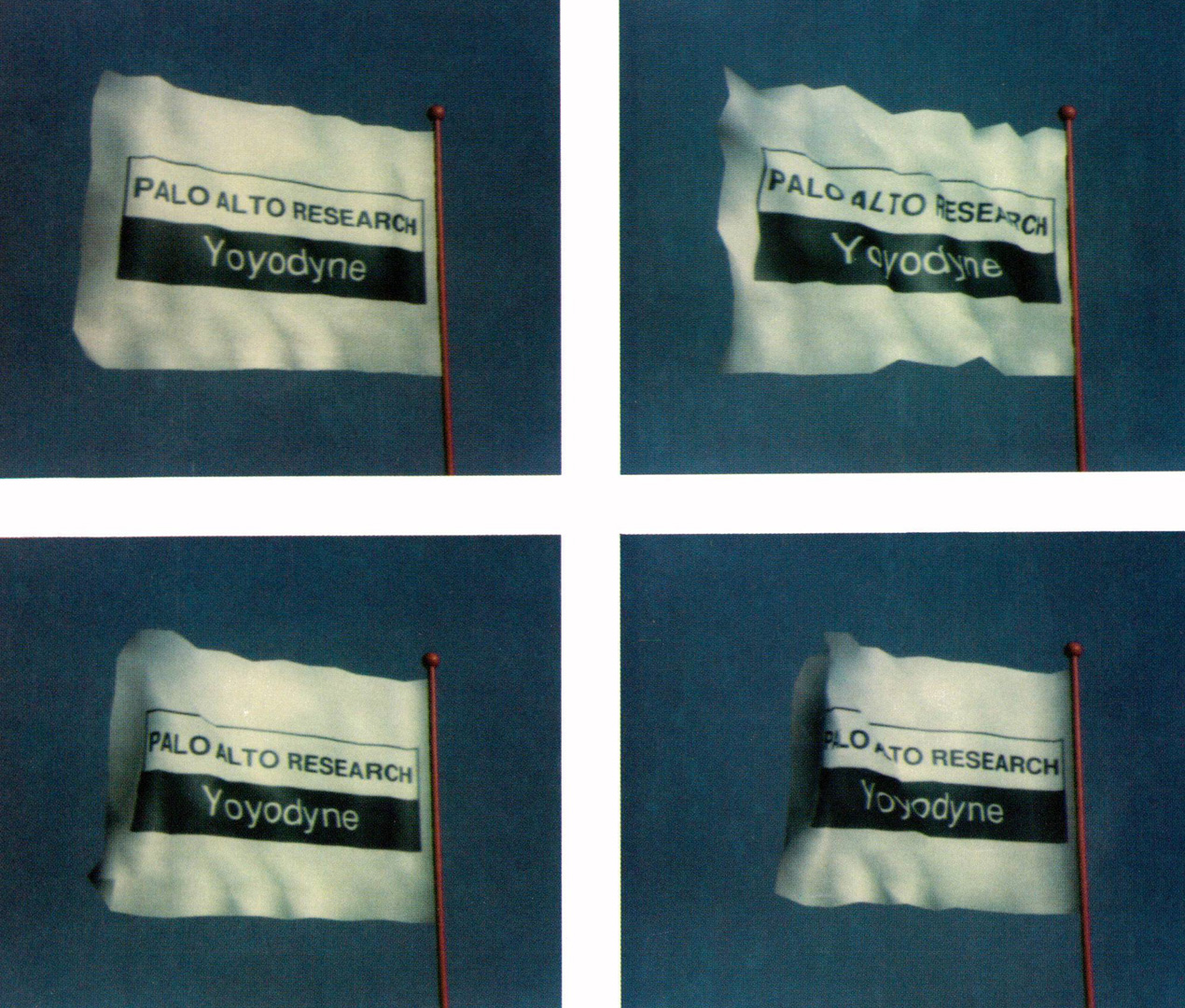“Elastically deformable models” by Terzopoulos, Platt, Barr and Fleischer
Conference:
Type(s):
Title:
- Elastically deformable models
Presenter(s)/Author(s):
Abstract:
The theory of elasticity describes deformable materials such as rubber, cloth, paper, and flexible metals. We employ elasticity theory to construct differential equations that model the behavior of non-rigid curves, surfaces, and solids as a function of time. Elastically deformable models are active: they respond in a natural way to applied forces, constraints, ambient media, and impenetrable obstacles. The models are fundamentally dynamic and realistic animation is created by numerically solving their underlying differential equations. Thus, the description of shape and the description of motion are unified.
References:
1. Armstrong, W.W., and Green, M., “The dynamics of articulated rigid bodies for purposes of animation,” Proc. Graphics Interface ’85, Montreal, Canada, 1985, 407-415.
2. Barr, A.H., Geometric Modeling and Fluid Dynamic Analysis of Swimming Spermatozoa, PhD thesis, Department of Mathematical Sciences, Rensselaer Polytechnic Institute, Troy, NY, 1983.
3. Barr, A.H., “Global and local deformations of solid primitives,” Computer Graphics, 18, 3, 1984, (Proc. SIC- GRAPH) 21-29.
4. Barzel, l:t.~ Dynamic Constraints, MSc thesis, Department of Computer Science, California Institute of Technology, Pasadena, CA, 1987.
5. Courant, R., and Hilbert, D., Methods of Mathematical Physics, Vol. I, Interscienee, London, 1953.
6. Dahlquist, G., and Bjorek, A., Numerical Methods, Prentice-HM1, Englewood Cliffs, N J, 1974.
7. de Boor, C., A Practical Guide to Splines, Springer- Vedag, New York, NY, 1978.
8. do Carmo, M.P., Differential Geometry of Curves and Surfaces, Prentice-Hall, Englewood Cliffs, N J, 1974.
9. Faux, ,I.D., and Pratt~ M.J., Computational Geometry for Design and Manufacture, Halstead Press, Horwood, NY, 1981.
10. Feynman, C.R., Modeling the Appearance of Cloth, MSc thesis, Department of Electrical Engineering and Computer Science, MIT, Cambridge, MA, 1986.
11. Fournier, A , and Reeves, W.T., “A simple model for ocean waves,” Computer Graphics, 20, 4, 1986, (Proc. SIGGRAPH), 75-84.
12. Fung, Y.C., Foundations of Solid Mechanics, Prentice- Hall, Englewood Cliffs, N J, 1965.
13. Gelfand~ I.M.~ and Fomin, S.V., Calculus of Variations, Prentice-Hall, Englewood Cliffs, N J, 1963.
14. Goldsteln~ H., ClassicalMechanics, Addison-Wesley, Reading, MA, 1950.
15. Immel, D.S., Cohen, M.F, and Greenberg, D .P , “A radiosity method for non-diffuse environments,” Computer Graphics, 20, 4, 1986, (Proc. SIGGRAPH), 133-142.
16. Kajiya~ J.T., “The rendering equation,” Computer Graphics, 20, 4, 1986, (Proe. SIGGRAPI-I), 143-150.
17. Kajiya, J.T., and yon Herzen, B.~ “Ray tracing volume densities,” Computer Graphics, 18, 3, 1984, (Proc. SIGGRAPH), 165-174.
18. Landau, L.D., and Lifshitz, E.M., Theory of Elasticity, Pergamon Press, London, UK, 1959.
19. Lapidus, L., and Pinder, G.F., Numerical Solution of Partial Differential Equations in Science and Engineering, Wiley, New York, NY, 1982.
20. Peachey, D.R., “Modeling waves and surf,” Computer Graphics, 20, 4, 1986, (Proc. SIGGRAPH), 65- 74.
21. Sederberg, T.W., and Parry, S.R., “Free-form deformation of solid geometric models,” Computer Graph. ics, 20, 4, 1986, (Proc. SIGGRAPH), 151-160.
22. Stoker, J .J ., Nonlinear Elasticity, New York, NY, 1968.
23. Terzopoulos, D., “Multilevel computational processes for visual surface reconstruction,” Computer Vision, Graphics, and Image Processing, 24, 1983, 52-96.
24. Terzopoulos, D., “Regularization of inverse visual problems involving discontinuities,” IEEE Trans. Pattern Analysis and Machine Intelligence, PAMI-g, 1986, 413-424.
25. Terzopoulos, D.~ “On matching deformable models to images: Direct and iterative solutions,” Topical Meeting on Machine Vision, Technical Digest Series, Vol. 1~., Optical Society of America, Washington, DC, 1987, 160-167.
26. Well, J., “The synthesis of cloth objects,” Computer Graphics, 20, 4, 1986, (Proc. SIGGRAPH), 49-54.
27. Wilhelms, J , and Barsky, B.A., “Using dynamic analysis to animate articulated bodies such as humans and robots,” Proe. Graphics Interface ’85, Montreal, Canada, 1985, 97-104.
28. Yaeger, L., Upson, C., and Myers, It., “Combining physical and visual simulation — creation of the planet Jupiter for the film “2010”,” Computer Graphics, 20, 4, 1986, (Proe. SIGGRAPH), 85-94.
29. Zienkiewicz, O.C., The Finite Element Method; Third edition, McGraw-Hill, London, 1977.





